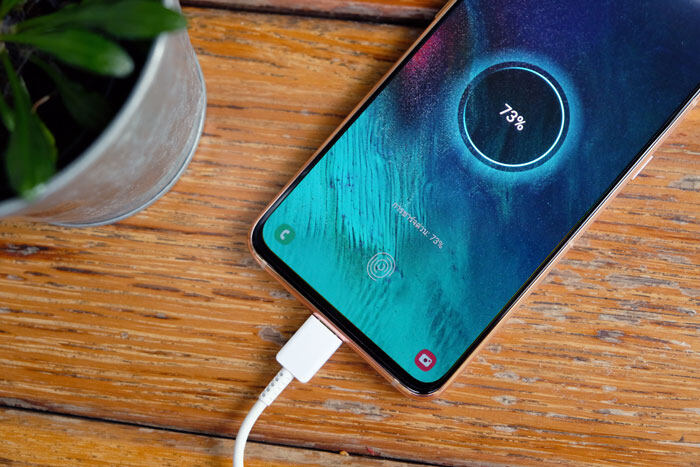Contents:
In the field of electronics and energy storage, understanding the current flowing through a system is crucial for safety, efficiency, and performance optimization. One valuable tool in this context is the Battery Charge Calculator, which allows engineers, technicians, and hobbyists to estimate and monitor the charging parameters of batteries, including current levels. This article provides a comprehensive guide on how to use a Battery Charge Calculator to determine whether a system is experiencing high current and why this information matters.
1. Understanding Current in Battery Systems
Before diving into the specifics of using a Battery Charge Calculator, it's essential to grasp what current is and why high current may pose challenges.
-
Current (I), measured in amperes (A), represents the flow of electric charge.
-
In battery-powered systems, current is influenced by factors like load resistance, battery voltage, and system configuration.
-
High current may occur due to a low-resistance load, faulty components, or overcharging, which can lead to overheating, energy loss, or even fire hazards.
Thus, detecting and understanding high current is a key step in ensuring system stability and battery longevity.
2. What Is a Battery Charge Calculator?

A Battery Charge Calculator is a tool—either software-based or a web utility—that helps estimate charging metrics of a battery. These metrics include:
By inputting known parameters (e.g., voltage, capacity, charge rate), the calculator computes expected values that help users assess the safety and efficiency of the charging process.
3. Common Inputs for a Battery Charge Calculator
Most Battery Charge Calculators require the following inputs:
|
Parameter
|
Description
|
|
Battery Voltage (V)
|
The rated voltage of the battery (e.g., 3.7V for Li-ion).
|
|
Battery Capacity (mAh)
|
Total charge a battery can store.
|
|
Charge Current (A)
|
The amount of current used to charge the battery.
|
|
Charge Time (h)
|
The expected or desired time for a full charge.
|
|
Charge Rate (C-rate)
|
The ratio of charge current to battery capacity.
|
Knowing how to manipulate and interpret these inputs is key to determining if a current is too high for the battery in question.
4. How to Identify High Current Using the Calculator

Figure: Practical current sensing circuit using shunt resistor and operational amplifier. Used to detect and measure high current from a 12V battery source.
Step-by-Step Guide
Step 1: Input Battery Specifications
Start by entering the battery’s nominal voltage and capacity. For example:
Step 2: Enter Charging Current
Input the charging current being used or planned. For instance:
Step 3: Observe the C-rate
Most calculators will automatically compute the C-rate, which is:

In the example above:

A C-rate above 1C for a standard Li-ion battery can be considered high, unless the battery is specifically rated for high current charging.
Step 4: Evaluate Safety Thresholds
Refer to the battery manufacturer's specifications to determine the maximum allowed C-rate. If your calculated current exceeds this value, it's a clear sign that you're dealing with high current, which can shorten battery life or trigger protection circuits.
5. Real-World Example: Smartphone Battery

Let’s consider a smartphone battery with:
Suppose the charger outputs 2.5 A. Entering this into the Battery Charge Calculator:
This is within safe limits for most modern smartphone batteries. However, if the charger outputs 5 A, the C-rate jumps to 1.67C, which is high current and can cause overheating or battery degradation over time unless the battery is explicitly designed for fast charging.
6. Indicators of High Current Charging
Even without full technical specs, high current charging can be inferred from:
-
Excessive heat generation during charge
-
Rapid charging times that seem too short
-
Voltage drops or system instability
-
Alerts or flags from battery management systems (BMS)
A Battery Charge Calculator, combined with real-time observations, helps confirm whether these symptoms are due to high current.
7. Benefits of Using a Battery Charge Calculator
-
Safety: Avoids overcurrent conditions that may damage batteries or devices.
-
Optimization: Helps fine-tune charge rates for speed vs. longevity.
-
Planning: Useful for designing power systems, especially in IoT, EVs, and robotics.
-
Troubleshooting: Aids in diagnosing issues like abnormal heat, slow charging, or rapid degradation.
8. Limitations to Be Aware Of
-
Calculators offer estimates, not real-time diagnostics.
-
They rely on accurate user input; incorrect specs lead to wrong results.
-
Temperature, aging, and internal resistance factors aren’t always accounted for.
-
Best used in combination with current sensors, BMS, or charging logs.
9. Tools and Resources
Some popular Battery Charge Calculators include:
-
Digikey Battery Life Calculator
-
Omni Calculator – Battery Charging Time
-
RC hobbyist calculators for LiPo and NiMH batteries
-
Custom spreadsheet tools for system integrators
For deeper analysis, tools like NI LabVIEW, MATLAB Simulink, or BMS firmware dashboards can provide real-time current data and predictive analytics.
10. Best Practices for Safe Current Management

-
Always consult the battery’s datasheet for max charge current specs.
-
Use Battery Management Systems (BMS) with current limiting features.
-
Choose chargers with smart control to adjust current dynamically.
-
Regularly measure current with ammeters or inline monitoring tools.
-
Don’t exceed a C-rate of 1C unless your battery is rated for fast charging.
Conclusion
The Battery Charge Calculator is more than just a planning tool—it’s a vital checkpoint for determining whether your charging current is within safe and efficient limits. By inputting key specifications and analyzing the results—especially the C-rate—you can reliably judge whether a high current condition exists and what actions to take.
Understanding and managing high current is essential not only for prolonging battery life but also for ensuring safety in any electronic system. Whether you're a seasoned engineer or a beginner hobbyist, incorporating a Battery Charge Calculator into your workflow is a simple but powerful step toward more responsible power management.
FAQs
1. What is considered "high current" in a battery charging context?
"High current" typically refers to a charging current that exceeds the recommended C-rate for a battery. For most standard lithium-ion batteries, anything above 1C (i.e., charging the full battery capacity in one hour) is considered high. Always check the manufacturer’s specifications—some batteries support 2C or more, especially in fast-charging applications.
2. Can a Battery Charge Calculator measure real-time current?
No. A Battery Charge Calculator is a predictive or estimation tool, not a real-time measurement instrument. It calculates theoretical values based on input data (voltage, capacity, charge time, etc.). For real-time current measurement, use a multimeter, current sensor, or battery management system (BMS).
3. What happens if I charge a battery with too high a current?
Charging with excessive current can cause:
- Overheating
- Reduced battery lifespan
- Capacity degradation
- Swelling or leakage
- In extreme cases, fire or explosion
Modern batteries with BMS usually have protection features, but it's always safer to stay within recommended limits.
4. How do I reduce the charging current if it’s too high?
You can lower the charging current by:
- Using a charger with a lower output rating
- Selecting a charging mode (slow/standard) if the device allows
- Adding a current-limiting resistor (in DIY setups)
- Adjusting firmware parameters in custom BMS or power systems
5. Are Battery Charge Calculators accurate for all battery types?











